This review will be based on my real-life personal experience with this camera. I will post several updates in the future once I know the camera better and when I have received my yellow, yellow/orange and red filters as well. The Leica M Monochrom is my first Leica camera ever, and I have previously used a Fujifilm X-Pro1 and several DSLR’s, lenses and flash units in the last seven years.
After I attended a Street Photography workshop with Adam Marelli and Eric Kim during September 2012 I was inspired to sell all the cameras, lenses and accessories I had and get one camera and one lens and focus on doing one thing better. I am a borderline gear head, so I tend to end up with too many options which makes it more difficult to focus on doing one thing better. This time I can’t afford to get many options. Leica gear isn’t cheap – so – my problem is sort of solved!
I initially decided to get an M9 but when I went down to my local camera store they had just received two M Monochrom bodies and one of them had been picked up by its new owner. Both of them was initially pre-ordered but the person that pre-ordered one of them decided not to purchase it, and there I was, looking at the M Monochrom box and quickly thought…
“All of my own photographs that I am most pleased with always end up being black and white images, so, why not take it one step further and simplify even more?”
No white balance issues to worry about, no color corrections and colors in compositions to worry about at all – just form, light and composition. I went home with the M Monochrom and after about 1 1/2 weeks I couldn’t be happier with my choice.
Enough small-talk, I guess you are curious to know what I think about the camera itself?
It is quite different. But in a very, very pleasing way. Shooting with this camera is a fantastic experience. It is all manual focus, and mostly everything has to be set manually, but still – it’s the camera that I have worked the fastest with yet. I find myself seeing more and more in black and white and my results are constantly improving. So far I’ve clocked in about 600 exposures on the camera – all of them with a 50mm lens (which is my preferred focal length). Since this is the first Leica camera I’ve owned I am not very quick or precise at manually focusing the lenses yet, but it is much easier than I anticipated. And to always be in control is a very welcoming change.
My experience with autofocus cameras is that I always had to “fight them” to get exactly what I wanted them to do. This is not the case with this camera… Basically, I have forgotten about the camera itself.
It took me about five minutes to configure all the settings as I wanted them and the only thing I do now is change my aperture, shutter speed and ISO and manually focus. Nothing else. I never go into the menus of the camera unless I want to format my SD card! I love this simplicity. No fuzz getting in the way of my main objective – which is trying to make nice photographs.
The quality of the files that this camera produces is simply, in one word, amazing!
I only shoot raw and import the dng’s to Adobe Lightroom for further processing. I made a custom import preset for the MM which disables the default sharpening (which is 25) and that enables auto lens correction. There is absolutely no reason to sharpen the files that his camera makes. And if the files aren’t sharp it is either the lens, camera shake, a moving subject in combination with a too slow shutter speed or poor manual focusing that causes the files to appear soft. I have never seen a pin sharp detail level like this before. It is simply extraordinary!
To prevent blown highlights during very bright light combined with shadow areas (contrasty scenes) a yellow or yellow/orange filter should be used unless you want to underexpose your shots. Either way works. A circular polarizing filter will also help but not enhance the tones in the same way. Using color filters will also enhance the contrast of the files which without a filter tend to be very flat. I have not received my filters yet, so during daylight I usually apply an exposure compensation of about -1 to protect the highlights (if the highlights are important to the picture. If they aren’t I usually just burn them). The files contain a very high amount of data in the shadow areas anyway, so it is quite easy to lift the shadows and at the same time lower the highlights in post to get a balanced result.
The files contain a huge amount of data, and you can basically take the images in any direction you want. Lower the Blacks down to between -50 and -70 and raise the shadows by about the same amount to get a more detailed and contrasty image. Then apply contrast and/or clarity as needed. Many people complain about how “gray and flat” the images are from the camera. This is true, but, the images is a perfect starting point for post production. The quality of the files let’s you do whatever you please with the images.
Post processing the files from the M Monochrom is quite different from cameras with color filter array’s (CFA) however. Forget all your old routines and techniques and start out fresh. If you try to apply your old routines with the files from this camera you will probably be a bit disappointed. You can go much further in any direction you want with the files from the M Monochrom, so forget all your old “limits” which applied to files that was made with cameras with CFA’s. It’s only when you go wild with the files from this camera that you actually notice how good the files are, and how creative you can be with them.
So far my experience with the M Monochrom has been very good. I have never shot only Black and White before. I have never owned a Leica before. But I am already feeling more inspired to keep shooting, and I have quickly started to look at things differently and compose accordingly. I have also started shooting during the evening/night when it is pitch dark outside. At 10000 ISO this camera delivers images that are – if exposed correctly – very usable without much noise reduction. The camera simply let’s me do what I want to do without getting in my way. And that, for me, is worth a whole lot.
There is one thing that Leica needs to address ASAP however. The M Monochrom firmware contains a bug that can make the camera lock up for a few seconds, or under some circumstances – totally freeze, which forces you to take the battery out of the camera to get it working again. The “Discreet mode” feature is the culprit, so I advice everyone to not use this feature until Leica has released a firmware that fixes it.
Update: According to Leica a firmware update for the M Monochrom will be released this fall. They are well aware of the “Discreet mode” bug.
Over the next weeks I will continue to share my experiences with this camera and I will go more into the details on how you can post process the files to achieve certain looks as well.
Until then I will have to learn more about the camera itself.
I hope you enjoyed some of the photographs which was made with the M Monochrom, a 50mm lens and Lightroom. All photographs were taken by me in my hometown – Trondheim, Norway – during my first ten days of owning the M Monochrom. I will post some of these images on my Flickr and 500px accounts in higher resolution within a few days.
If you’re considering purchasing a Leica Summilux 50mm f/1.4 ASPH, and you feel that my review helped you make a decision, I would appreciate if you could look at the purchasing options via my Amazon affiliate:
Part two of the review is up. Read it here: Leica M Monochrom review – a real life usage review – part two
High-resolution images has been uploaded – look here for more details: Leica MM high-res images are up
Some more example images
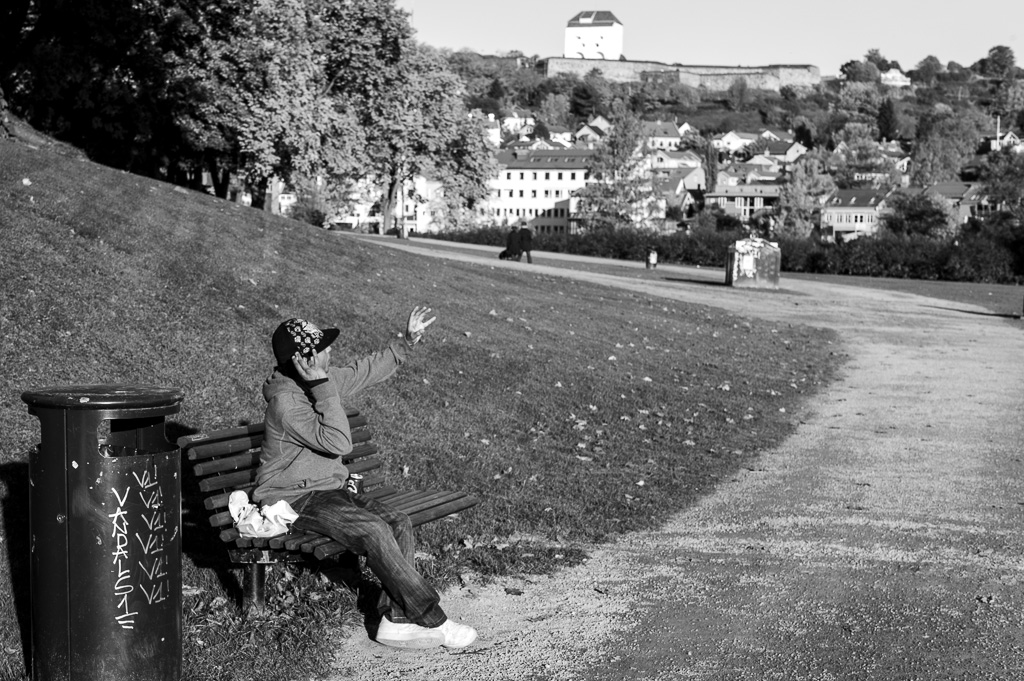
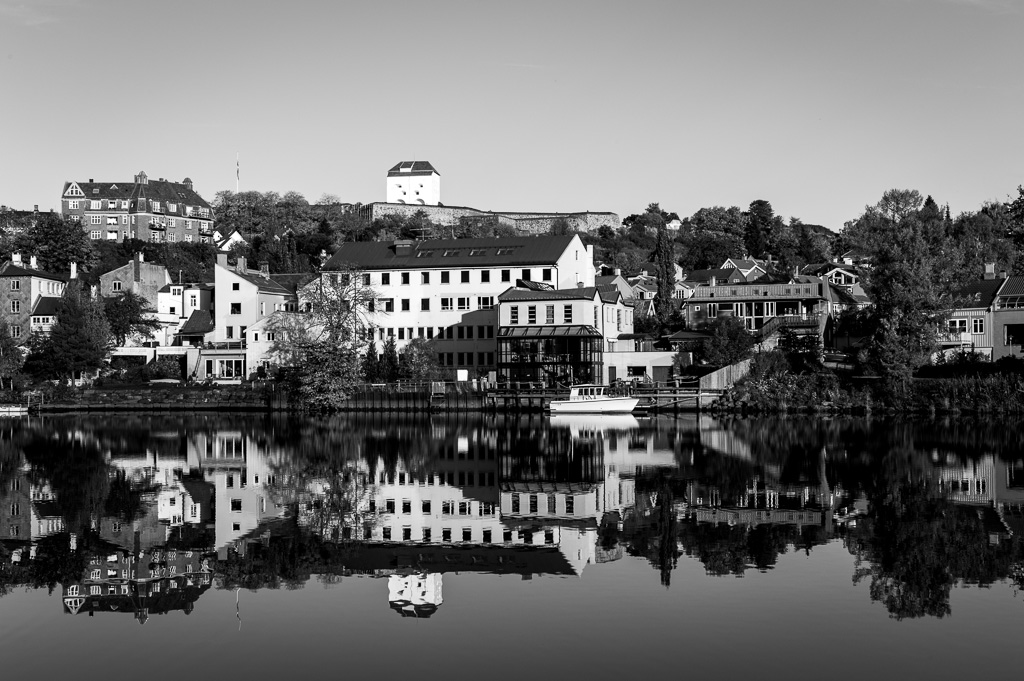
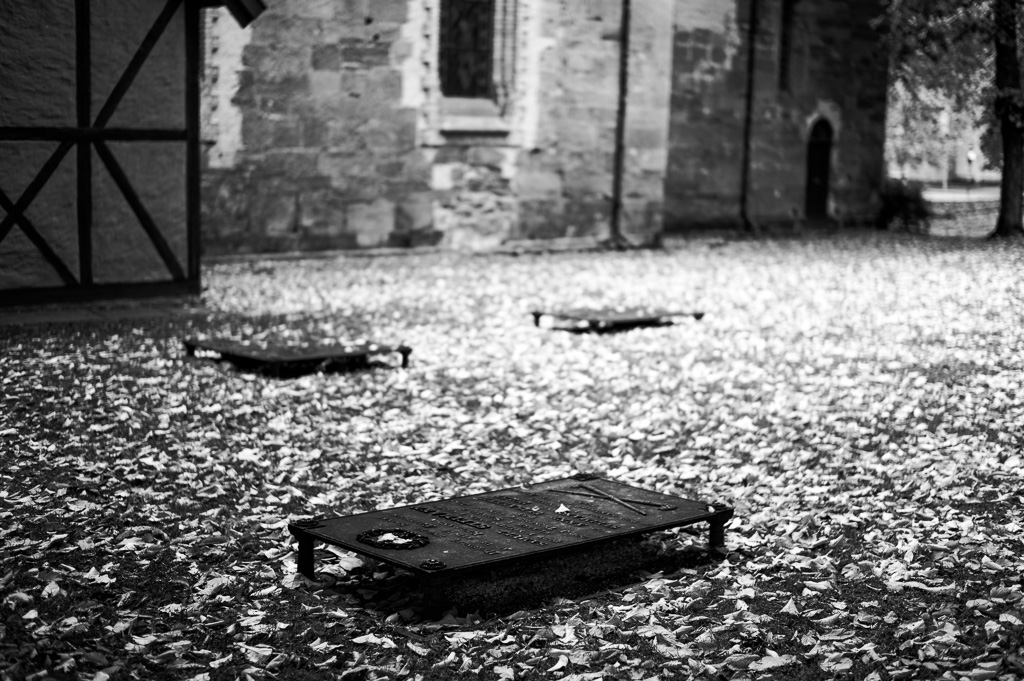
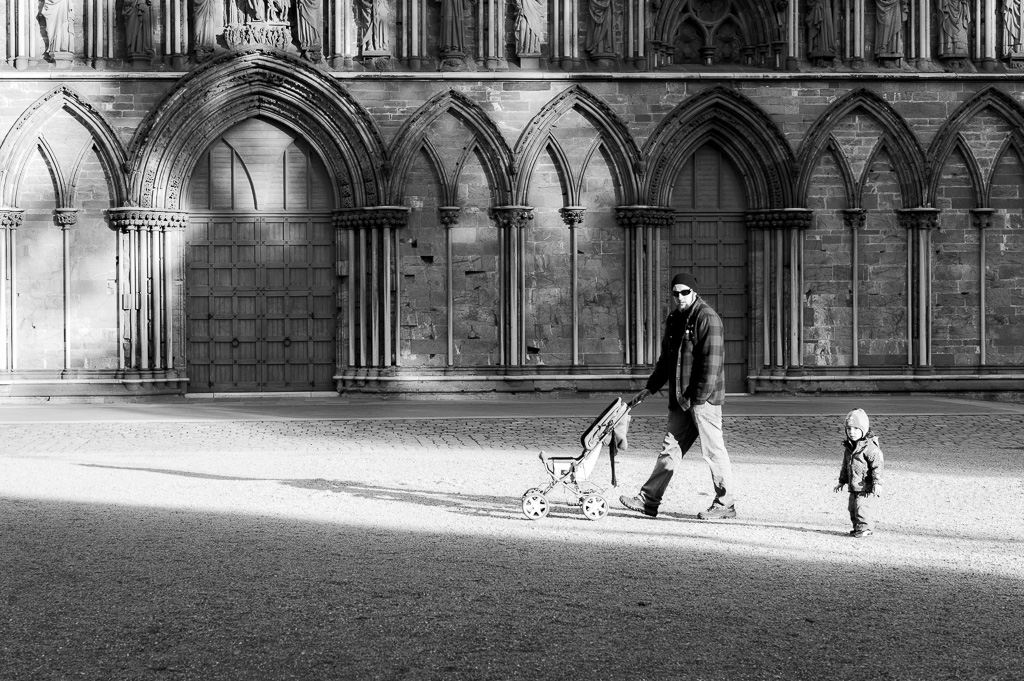
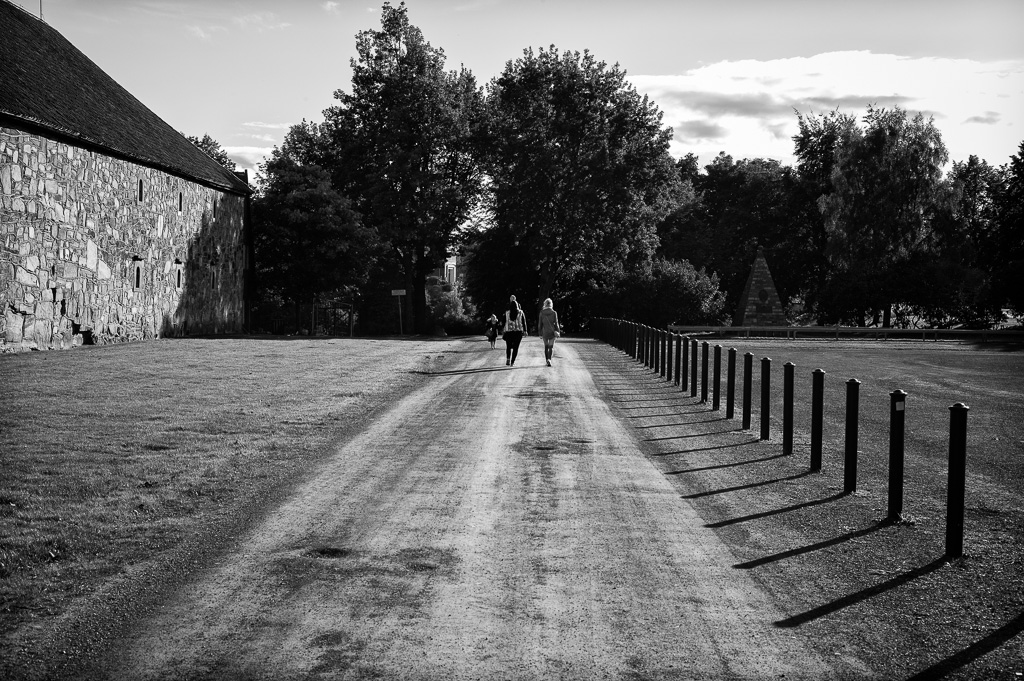
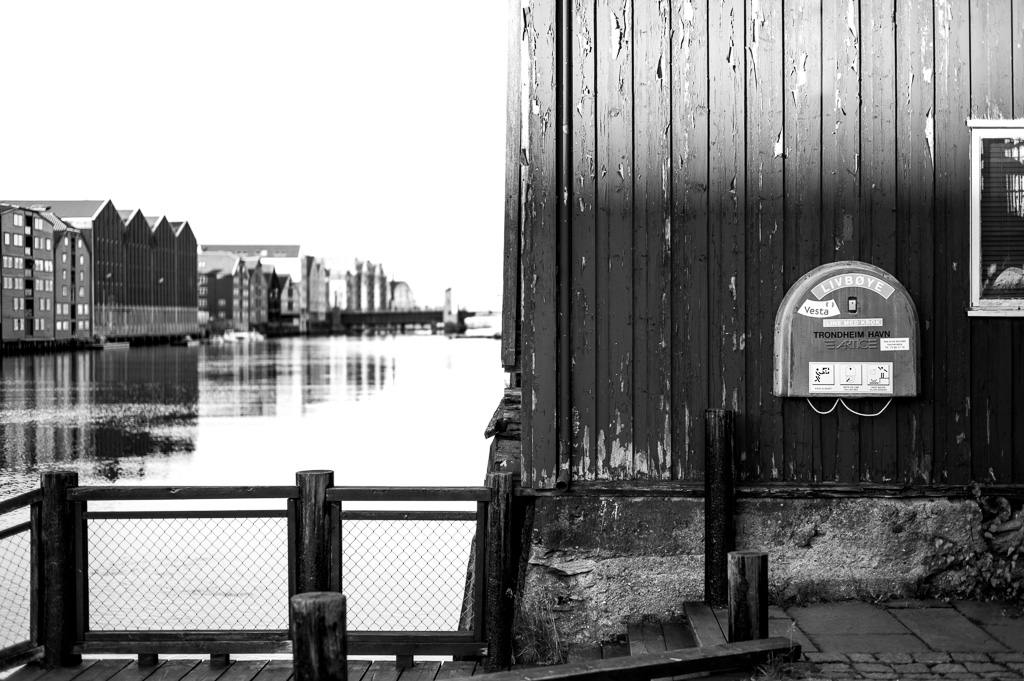
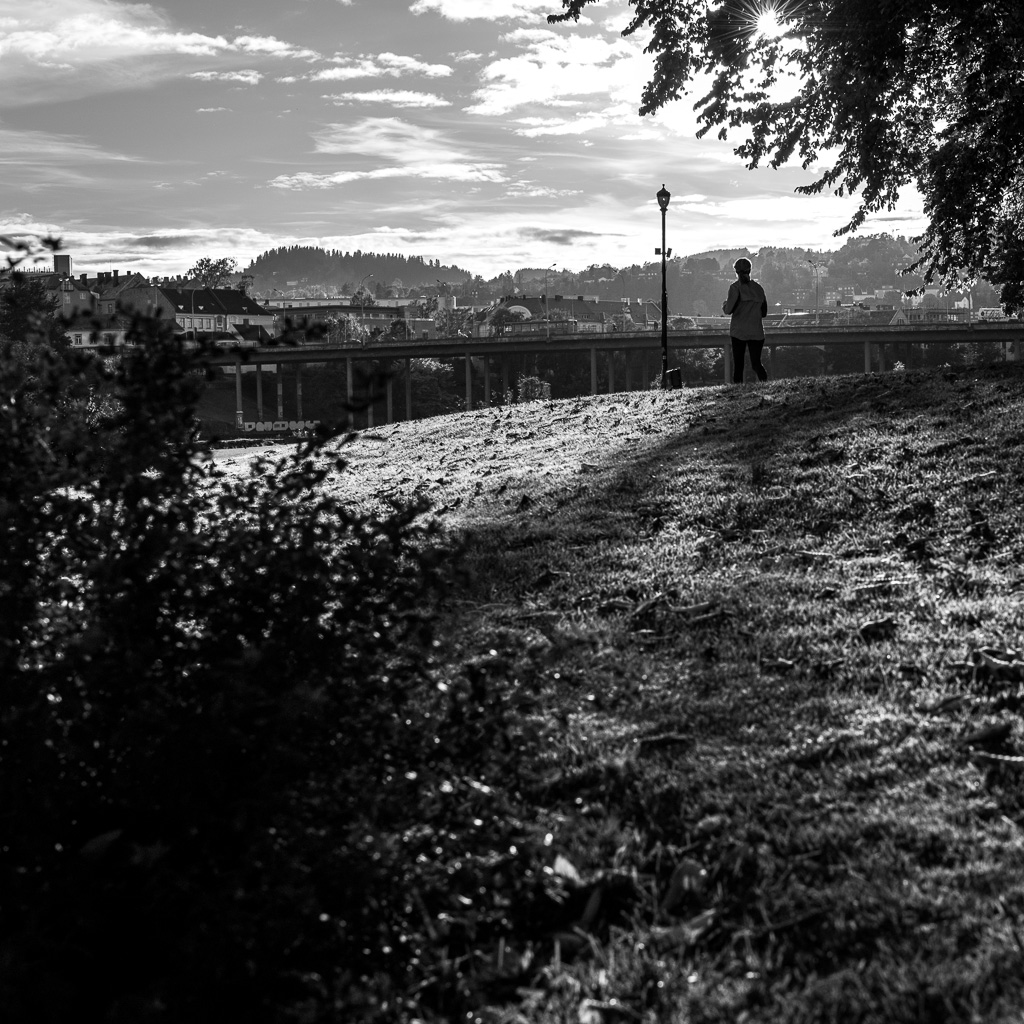
76 Comments
Join the discussion and tell us your opinion.
Congratulations and many thanks for reviewing the camera! It may help others, and that’s what counts.
Thanks!
I have noticed that people are a bit disappointed on how the files look straight out of the camera. I will publish a part two review in the next week as a follow-up where I will give advice on post-processing. You can do a tremendous amount of post-processing on the MM’s files compared to cameras with color filter array’s!
Hopefully someone will appreciate the development recipes 🙂
Leica has many strengths. OOC JPEGS are not one of them.
Hi Tom, that is very true!
You have said exactly what I have tried to say about this camera, only in a much more eloquent way. Also, very nice shots. I particularly like the 1st and 4th, with the detail in the leaves.
Hi Jon,
Thanks for your kind comment. It is truely a lovely camera! And the files from it is incredible. Please share your experiences with the camera as well – feel free to send me an email so we could exchange our experiences if you want to.
Thanks for your comments on the pictures! Much appreciated.
Thanks for the review. Nice photos.
Hi Mike, my pleasure.
Thanks for your comment.
Congrats! Great camera review. I hope you continue to enjoy your MM. I have read several reviews and would love one.
Hi Nick, thanks for your comment. I really enjoy it! If you are into B&W and shoot B&W mainly then I say go for it!
To be honest dude, i can’t see no big difference to good developed b/w file from my x-pro 1, especially in this small resolution. I would like to believe the idea of a monochromatic sensor and enhanced tonality, but i can’t see it. What makes the big difference in film, is the fact that u nearly are unable to blow out highlights like seen in ur pictures above.
This isn’t a technical comparison between any camera, nor is it a technical review. I am just sharing my experience with the MM – and that’s it. If you want to discuss and debate technical details then there are many available forums where you can do that, because I won’t tolerate any of that here. And for your information, I blew the highlights in the few example pictures I had here on purpose in post to get the look that I wanted.
The X-Pro1 is a fine camera. Enjoy it.
I always do and i never become a fanboy of locusts dude 😉 1 and 0, are 1 and 0. And digital tones are heavily mathematic, in this case 2 to the 14th(14-bit sensor) = 16 384 greytones, reduced to 256 in jpeg. Think about that.
Nobody needs more than 2 megapixels for posting photographs online, to put it into perspective.
Your monitor is probably 8-bit anyway, so it doesn’t really matter if the jpeg image is limited to 256 tones. The only reason you need more information is for heavy post-processing and printing large.
So what do you need the 12-bit raw files from the X-Pro1 for if you only view your images on a monitor?
Enough about numbers, bits and bytes. That’s what I do for a living – and I am currently not in my office. And if you want to get technical on a really deep level I usually charge about $200/hour for my service. And if not – well – then let’s just keep discussing photographs – not bits and bytes.
Actualy, not much in case of daily, but enough. Ok, that’s a ballsy and funny statement(2 megapixels) and your point of view.
Heavy post-processing, hmm, that’s a clear missmatch with the target group, but not the point.
The point is the large format printing, you are right. But i am feeding my printers with 0 and 1’s and again under some limitations(which aren’t there in real film processing). It’s not clear to me, how can u print out an image, f.e. in warm greyscale, without doing some tonality processing(which challenges things into question), otherwise your print would include only one color(K). So in conclusion, you could theoretically only take full advantage of the sensor design when you are printing with a printer which got something like 4 different blacks.
At this point i am not believing that you’ll see any difference, but everybody is invited to prove the converse.
“At this point i am not believing that you’ll see any difference, but everybody is invited to prove the converse.”
I am not trying to prove anything. I got this camera because it felt right in my hands, and I enjoyed using it – ergonomically. I didn’t get it to get more pixels, sharper pixels, higher dynamic range, less or more noise, better battery life.
I got it because I really prefer working with manual focus, and, because of it’s simplicity. It’s a camera that simply is invisible and let’s me do what I want to do in full control. I also prefer black & white and to force myself to focus better on B&W’s I got this instead of an M9/M-E. I didn’t get it to replicate B&W film. I got it because I can skip colors totally. No white-balance issues, no color shifts, no color correction and so forth to worry about.
The technical stuff… We’ll, I couldn’t care less. As long as the camera records images that pleases me I’m satisfied.
So the conclusion is basically: You care about technical details, I don’t. You need to make a point, I don’t. I like making pictures and hopefully you do as well. So hopefully we have one thing in common.
Thanks for ur fast reply. Nothing to say. I am a 3,4k complete kit, german lederhose who needs to make a point, unvisible fuji ninja who will never understand this concept. I always thought people with red circles on their cams need to make a point, damn, new world order.
Enjoyed your review … unfortunately some comments are unwarranted and irrelevant. Ignore the distraction, go out and shoot some more and let us have more of your input. There are many who are interested.
Glen 🙂 Nice to see you here mate.
Thanks for your feedback 🙂 We need to get some more Spritz some day!
Hi Borg
lovely article, directly from the bottom of your heart. I love this kind of articles .
Pleased to hear you enjoy your MM so much
Lovely pics although i think you added contrast abit to much
I am looking forword to your next article
Danny
Thanks Danny.
Regarding contrast: I post-processed these images specifically to make them more black and white than gray. I have seen that many people complained that many of the reviews and write-ups on the net showed very gray and flat files, so I thought I’d showcase something else.
But you are right, I might have added a bit too much contrast. My monitor at home is calibrated so it isn’t very contrasty, but on my monitor at work and on my laptop for example I can see that the images contain more contrast than what I could see on my calibrated monitor 🙂
🙂
Danny, I updated the review with some less contrasty images now. They are still very contrasty (intentional) and black/white but not as over the top as before.
Amaing photos, great post 😀
Thanks Ben!
No problem 🙂
Borge, I see what you mean about the contrast versus gray images. On my 46″ HDTV when I hold the cursor over the picture, the picture turns gray and washed out, at least compared to the final print. Is that the look before you processed them? Also, I’m curious to know what you used for PP. Lightroom, Silver Efex Pro? Hope you are enjoying your camera.
Tom
Hi Tom,
When you do a mouse-over on the images the gray overlay is just a function of my blog, and does not represent the untouched images. But ironically they might in resemble the original files before they were processed indeed 🙂
I used Lightroom 4.2 for PP, and didn’t spend a lot of time PP’ing the images. I basically just adjusted exposure in a few shots, blacks, shadows, highlights and whites. No sharpening or NR was used, as well as no “special effects”. The MM’s files are very easy to work with.
Ah, in answer to one of my questions, Borge, I just saw from your article that you are using Lightroom.
I sincerely believe that traditional photography, the real
photography as art has become moot. Additionally photographic equipment currently there are proportionately much lower quality than chemical film classic teams. Additionally, as something very important today to have a camera with full control and a good lens system as it was in other previous decades, is exceedingly expensive. The example of keeping Leica ergonomics and manual handling is what you should have done the other equipment manufacturers. The full manual operation of a camera shoots in my opinion gives the photographer full control to express their art. I do not think that is relevant but the amount of megapixels good treated glass lenses and a good manual focus system. Unfortunately it is now owning some cost overruns and is only manufactured by Leica and a few other manufacturers.
IMHO.
Sorry for mistakes in translation. I use google translator.
Leonardo
i liked your pics and i certainly liked the MM 🙂
Thanks Danny!
Borg, reading your replies to some readers’ comments leaves me feeling quite uncomfortable. When someone expresses a view that does not match or support your own, your response is quite defensive and aggressive. People are entitled to their views and opinions and are entitled to express them just like anybody else – whether they conform to yours or not. While I appreciate your views and opinions, I appreciate other, contrary views as well. We can all learn and grow from diversity of thought. Open mindedness, tolerance and civility go a long way. Try it, I’m sure you’ll come to appreciate it.
I am agressive, especially towards biased people. Expressing your opinion and respecting others for their opinions = just how it should be. Showing prejudice and not being – or being able to – understand other peoples values or opinions however – Not cool in my book, and my response will show that.
Also, this is my blog. My little place on the net, where I can form the content as how I want it. I don’t want any technical mumbo-jumbo here – and there are many other forums (dpreview, etc, etc, etc) where one can go to talk about bits and bytes.
Thanks for sharing your opinions. It’s sad that you are uncomfortable with my replies. If my replies make you uncomfortable I suggest that you just don’t read my blog… This is just my personal space anyhow, and I’m not trying to or making any money here, I am not affiliated with anything or anyone, and everything that I write here is my personal opinions and nothing else.
And if I think someone writes something stupid on my blog, well, then I will tell them my opinion. I’m very honest with people about my opinions, and I prefer people that are the same (less confusion).
Have a great day Bernard.
Sorry – if you don’t like it, don’t read it. Personally I think it’s a superb review.
Well , Borge, thank you for showing your true colors. It is too narrow a color scheme for my taste and I will no longer view your publications.
Listen to the words of wise people like Bernard!!! Read it twice. Stupidness is a very subjective thing Mr. Borge. Some people might think, that people who are paying 12k for a leica kit are stupid… And you are not in the position to offend or judge them. I respect you for your works, but your words throwing shades to every pixel of them.
I tell can tell you, as a open minded and very honest guy, agressivness will destroy every mind-related to “art”. A nobody becomes an artist, in the moment he doesn’t search for appreciation. Art is nothing more than your personal catalyzer to filter out every fucking bit of agressiveness.
In regards to art I have a very open mind. And I accept everyone and anything for what it is.
I do not want to discuss the technical workings or aspects of tools however. Bits and bytes are not related to the types of arts that I am interested in. Bits and bytes are what I do for a living.
People should buy whatever they please. I personally don’t care, because its none of my business to tell others what is or isn’t right for them.
You don’t need a Ferrari to drive to the supermarket either. But that doesn’t give me the right to criticize those who do. And I wouldn’t even if I could claim that right.
And that is kind of my point. People that do claim that right, and that do criticize others for their choices are very annoying. And I simply don’t respect those types of people. It’s that simple.
I am sure, his majesty the emperor haile selassie I, while bring some light to the dark parts of your mind one day!
To bring it to a point of secular facts – read my words again. I never critised you for any of your choices. I just wanted to understand the difference i couldn’t see in your images above, and thats what i said(honestly). And the sad fact, i can do nothing that you want feel less offended. I took a look @ flickr, at a lot of other examples, and they told me what you where unable to tell. I believe in the idea of the monochrom thing, even if some cases in reg. workflows have to be strongly optimized to deliver the real benefit.
All the best to you, i am sure we will meet each other again in better circumstances one day.
…a great pity that this blog has been “hijacked” with, largely, irrelevant sniping! I, too, own the Leica Monocrom (note the spelling – a big clue is that the word “Monocrom” is actually engraved on the hotshoe on top of the camera body!).
I share Borge’s evident love of this unique camera – I also fully understand why he is so fond of it, so soon into the “Leica Experience” and for the very same reasons as myself – ie a return to simplicity, full control over the camera’s functions – (that control allows a huge amount of personal input into creating every image) – and a camera which is almost cathartic in the user experience; I am only concerned now with the creation of the picture – white balance adjustment/consideration is a thing of the past for me and I have become much more attuned to the potential opportunities for Black and White image taking.
I bought the Monocrom in July 2012 together with a 50mm f1.4 Summilux and the very first test shot (jpeg, OOC) convinced me that I had something rather special in my hands! I have a “full” lens kit now – having raided the treasure chest of eBay! I use a 28mm Elmarit asph (a relatively slow lens but made very usable, even under low light conditions, by the very usable high ISO abilities of the Monocrom). In addition I have a 35 mm Summicron and a 90mm f2 Summicron (pre asph – a real beauty of a portrait lens with amazing bokeh at wide aperture). I mentioned the high ISO ability/usability of the Monocrom – that is a very real advantage and any “noise” associated with high ISO simply appears as a very acceptable (even pleasing!) grain effect. Of course, for optimum width of tonal range I would prefer a lower ISO setting where possible.
I would encourage you, Borge, to explore Silver efex Pro 2, which is the “packaged” add-on to Lightroom 4 (which comes with the Monocrom) – I have found Lightroom to be a pig of a challenge to get my head round – I am still only part of the way there because I am NOT computer literate in any shape or form – but I am assured that it is well worth the effort. Silver Efex Pro 2 is a very straightforward tool which in addition to the normal features such as exposure, shadows, highlight adjustment etc, offers a wide range of tonal choices and about a dozen film-type replicas (how accurate those replications are, I cannot say). In addition, Silver Efex offers about 30 preset options, ranging from Antique, Soft Sepia, and others that I cannot remember at this stage.
I have improved the ergonomics of the camera by attaching a long “Thumbs Up” grip and an after market hand grip (the Leica offering is simply ugly and cheap looking, not to mention much too expensive for what it is!).
In summary – I share Borge’s love of this camera and I wish you well, Borge, in your experience of the Leica Monocrom – if you enjoy it half as much as I am doing, your expenditure and faith will have been justified.
I have read through all of these comments and wonder why oh why does anyone think that the monocrom can be judged on the basis of computer images. You can only tell the merit of this or any other camera by PRINTING pictures, then preferably framing them and hanging them on the wall.
I have a monocrom and am in love with it. The prints it allows me to produce are incredible and rival the best I have done with B&W film and my M6.
Nice blog. I like the images and the written content.
Hi John,
Thanks for your kind reply.
You pretty much nailed it in what you said. Nobody can judge picture quality based on a small jpeg file posted in sRGB on a website. Especially not with modern high-end cameras. The latitude that is available with the MM’s files won’t be visible in the small jpeg’s either, and that is where a big part of the MM’s strength lies. I have never been able to tweak and PP files as much as I have been able to do with the MM’s files with extraordinary results!
Enjoy yours!
Hi Chris, thanks for your reply.
You got your MM very early then! 🙂 When I got mine I tried it with a 50 Cron (latest version but not the APO) and it produced some stellar captures. Then I got a chance to try the MM with a brand new 50 Lux ASPH and it blew me away. The images look very different, and the Lux produces some incredibly 3 dimensional images that you get “sucked into”. And the way the Lux renders the out-of-focus areas is simply amazing on the MM. After trying the Lux I simply had to get that lens.
I’ve tried a 35 Cron “King Of Bokeh” (pre-asph) on the MM as well, and it produces some nice results but the 35 Lux FLE is a noticeable improvement… especially on the MM. I just really love how the ASPH lenses renders the images on the MM. So that is what I’m currently saving up to as those are my favorite and by far most used focal lengths. Next up I will probably get a Carl Zeiss 21mm f/2.8 ZM which is a very nice wide-angle lens for the money apparently. And then possibly a 90 of some sorts.
To be honest I have been too busy just taking photographs with my MM. I haven’t really had time to do some serious post-processing yet. I am familiar with SEP2 as I haved used it previously for B&W’s as well, and I also use Alien Skin Exposure 4 which has an incredible collection of film presets that I think look better than SEP2’s film presets.
The Thumbs-Up is a must-have on any M. That is the first thing I ordered after my purchase. A black EP-1S – unbranded 🙂
Enjoy your MM as well. Let me know if you have a site (flickr, 500px, or blog) where you share your photographs. I would be very interested to look at some of your captures, and we could also share more experiences with the camera in the future.
Hi there Jan,
I too have fallen in love with this camera having only got mine a week ago. I have been a Lieca addict for many years but never, with this camera or any other, have I been so excited and passionate about taking pictures. I spent untold hours in dark rooms and the magic that takes place in there can only be experienced. A negative is like an engagement with magic, deeply mysterious and yet, one knows that there is an astonishing amount one can do. Yes, if you have a dark room, chemicals, many different papers, a top-of-the-line dark room with enlarger and very good lens. And yet, even thought I and no doubt tens of thousands of others mourned the passing of film (from a practical point of view) than along comes this amazing camera that can be described as not less than a dark room in a small box. It’s all there and with Lightroom 4, it takes about four minutes and voila…there it is, the full Monte. I do have one problem though, the files scramble out of order when I down load them and the metadata is corrupted. The camera too crashes when I try to set the time. I guess it can only be a software issue but, despite this frustration, with a Summicron 50mm F2, I am in photography heaven. Love your pics. I think they are great.
All the best,
Nick
Hi Nick. Thanks for your comment.
Your experience is much like mine. The MM’s DNG’s are incredible to work with, and you can basically and easily take them in any direction that you want and create some stellar results. I did try to print some of my images recently and let me tell you – the prints that these files produce are simply amazing.
I have not had any of the problems that you have had with your camera. Maybe you should try and reset it to factory defaults? The only known bug that I know of is the “Discreet mode” bug which causes the camera to lock up in certain scenarios. This bug is confirmed by Leica as well, and they are releasing a firmware during this fall that should fix this issue.
If you have any site (flickr, 500px, blog) where you share your photographs – please share them!
I wWant to believe in the monochrome…. But I just don’t see it in the files I’ve seen posted. Frankly, I think the m8 with its increased IR sensitivity gives better b&w files.
Hi Jim,
I haven’t tried an M8 so I cannot comment on it. I suggest that you download a few DNG files from the M Monochrom and play with them (there are some nice examples out there if you google it) and then compare. You can’t really judge the files based on 1000px down-scaled images on the web. I have no problems using the MM at up to ISO 10000 however, and with a f/1.4 lens I can shoot any time of the day, dark, light, it doesn’t matter at all. Available light is all you need, and you never need a tripod.
The main advantage of the MM for me is basically “less is more”. You cannot shoot color. It makes me focused.
great review.
i too have an MM and i have also had an M8 and an M9.
the M9 made better mono conversions than the M8, but i think “conversion” is where the issue lies.
the MM doesn’t convert, it shoots direct to mono and therefore technically has to be better than converting.
it’s the closest i have been to shooting tri-x film and that (for me) is heaven!
colour gets in the way!
Thanks Stephen.
Congratulations on a great camera. I have been following your blog and seeing your pictures as you post them.
The conversion process is indeed a conversion process, and the end results will look different depending on what software you use as well as which settings you use, and, the white-balance of a color raw file also needs to be correct and any color specific information (ACR / Lightroom color profile (standard, portrait, landscape, etc on Canons for example) will also influence the B&W conversion!
Personally I think all those steps was a PITA to work with. It is so much more comfortable to work with native monochrome files! And the resolution of the files is just amazing. According to a few very technical reviews the files are more detailed than medium format film.
Enjoy your MM. And if you have written or plan to write some articles about the MM or post-processing the MM’s files let me know, I’d be very interested to read it.
Hey Børge,
could you please tell me which “after market hand grip” you are using for your Monochrom? I’m looking foward to buy one and I’m really not happy with the price of the one from Leica.
Hi Dan
I’m not using a after market hand grip on my MM. I’m using a Thumbs Up! EP-1S thumbgrip which I think improves the ergo a lot.
Hi, I think your website might be having browser compatibility issues.
When I look at your blog site in Firefox, it looks fine but when
opening in Internet Explorer, it has some overlapping.
I just wanted to give you a quick heads up! Other then that,
fantastic blog!
I love my Monochrom. I have more people commenting on my images than in the past. Recently, I displayed a print at my local photography glass and my instruct talked about it at length. He was impressed with the sharpness and how it captured the subject’s soul. My instructor worked with Ansel Adams and has work displayed at the Getty. I truly enjoyed ever word of your review. Thank you for taking the time to present your information and opinions.
My pleasure Tom. It’s a great camera.
Thanks for sharing!
Very interesting and bold move to go b&w only. Probably the right choice, b&w is the real thing in photography.
Please continue sharing stuff & pictures.
Thanks Andreas!
Hello, i read your blog from time to time and i own a similar one and i was just curious iff you get a lot of spam responses?
If so how do you prevejt it, any plugin oor anything you can recommend?
I get so much lately it’s drivin me mad soo anyy help
is very much appreciated.
It’s nearly impossible to find educated people on this topic, but you seem like you know what you’re talking about!
Thanks
To put this comment into perspective, I’m a professional photographer, whatever that means (galleries and such), and have been for decades. I take my image making very seriously. Having said that, I cannot for the life of me understand why anyone would shoot digital B&W w/ any camera, Leica or otherwise. The quality of the image is so far from traditional film B&W its not funny.
I know, another Luddite anti digital guy. No, not really. If I could get film quality w/ digital, why not? Buy you can’t. And I have so many wonderful ways to get a different look w/ film. Choice of developer, type of agitation cycle, how the exposure is rated in camera, and on and on. And you DO realize that no inkjet paper is archival, right? Anything w/ coatings on it will not last. Well, its these digital reviews w/ images that keep my work looking really good in comparison, so keep up the good work! And on the sly, without telling anyone, maybe pick yourself up a nice old $50 film camera, load it up w/ Tri-X, and shoot it at 100-200 ISO w/ a yellow filter. Then send it out to a good pro lab if you’re not up on developing. Seeing is believing.
You said: “All of my own photographs that I am most pleased with always end up being black and white images, so, why not take it one step further and simplify even more?”
For selfish reasons I’m happy with your choice! Your pictures make me want to visit Trondheim.